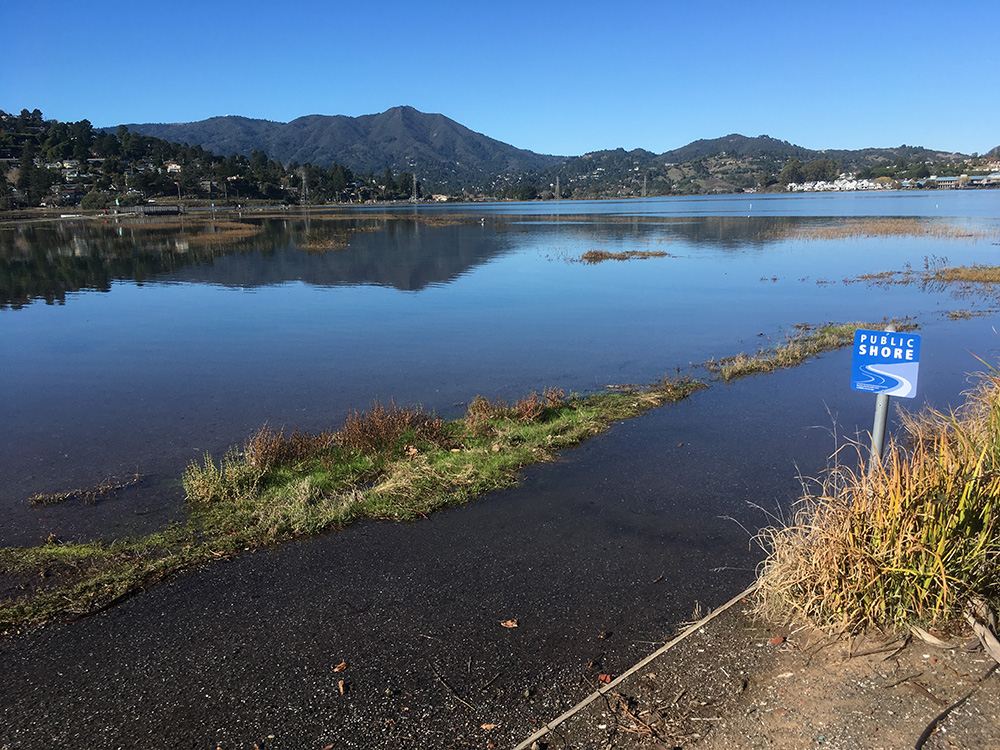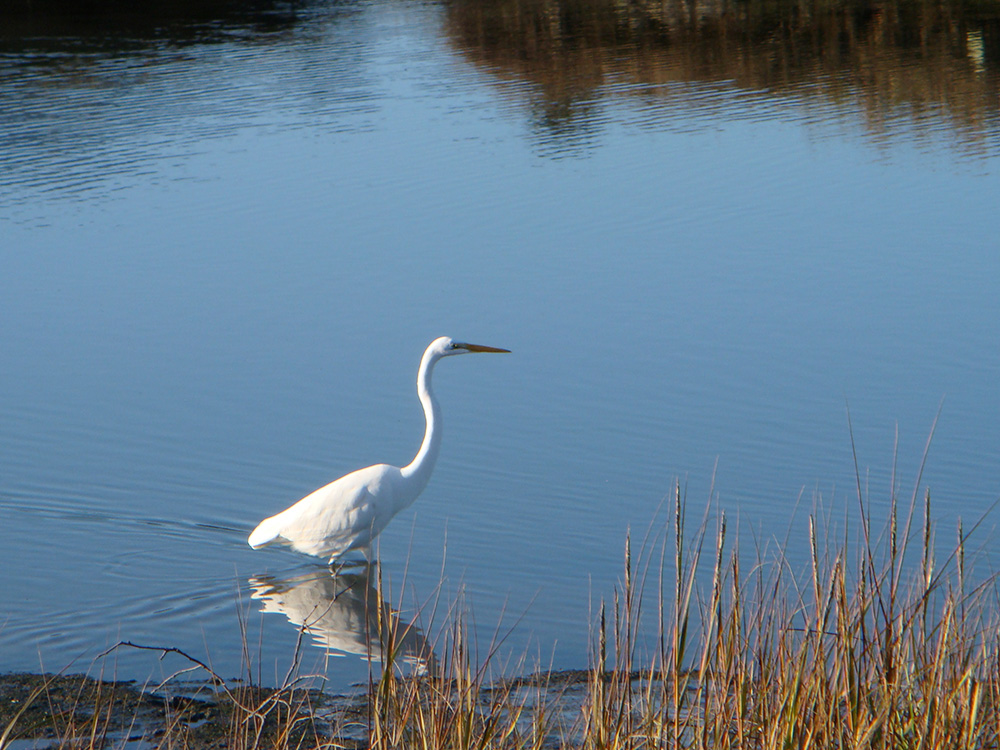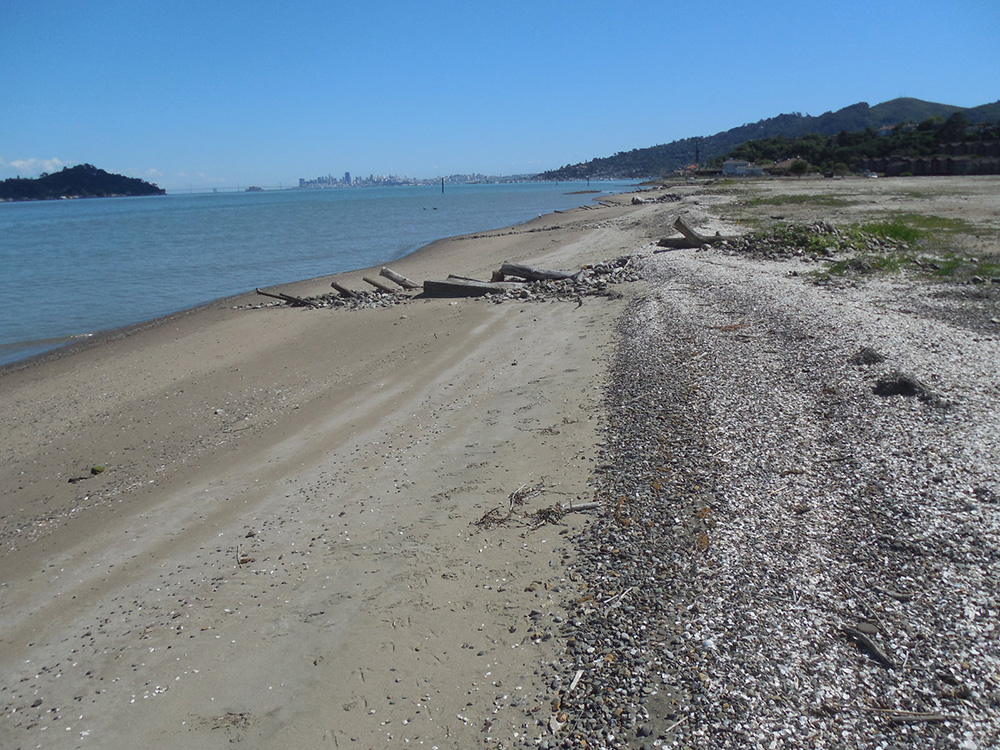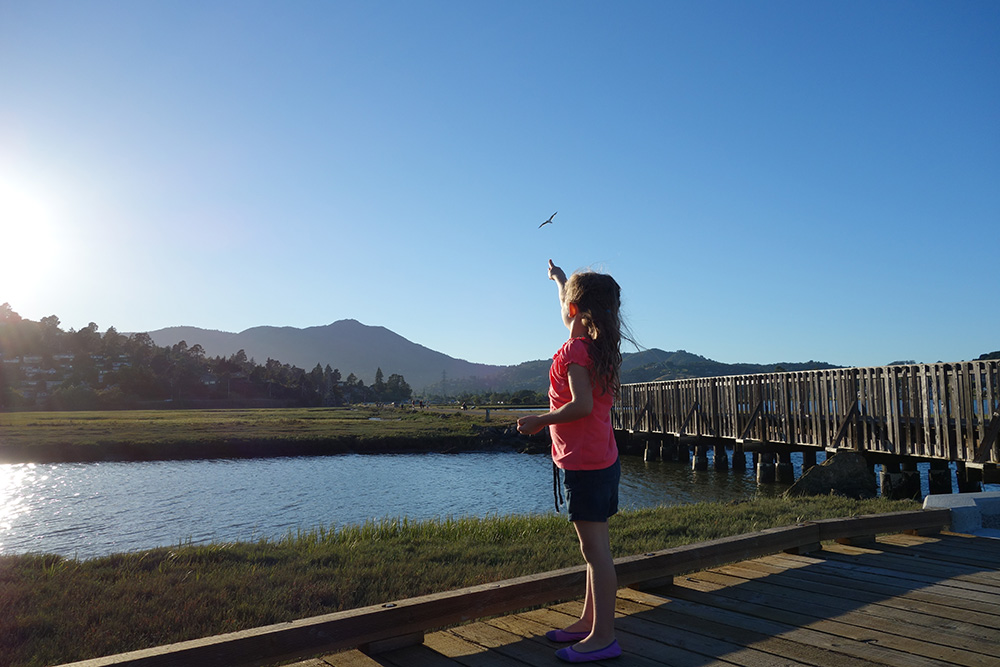Bothin Marsh - Sea Level Rise
Mountain to Marsh: Interconnected Watershed Lands
Each of Mt. Tam’s watersheds is a complex mix of landscapes; their streams cascade down from forested ridges through oak woodlands, chaparral, meadows, and wetlands and flow into the bay or ocean. The condition of each habitat, as well as the connectivity between them, is critical to the overall health of the watershed and its inhabitants.
Mt. Tam’s Coyote Creek and Arroyo Corte Madera del Presidio watersheds drain through Bothin Marsh into Richardson Bay. Bothin Marsh helps keep the bay healthy by filtering runoff pollution from nearby urban areas, reducing erosion, and reducing flood risk when water levels are high. This 106-acre area of marsh, slough, and tidal wetlands provides year-round habitat for hundreds of birds and other wildlife, including the endangered Ridgway’s rail. It is also a resting stop for more than 400 species of migratory birds traveling on the Pacific Flyway.
The Mill Valley/Sausalito Multi-Use Path (Bay Trail) and the Charles McGlashen Multi-Use Path traverse Bothin Marsh an provide an important regional bicycle commuting corridor as well as local linkage for the community to get to school and work. The trails provide year-round recreation opportunities to tens of thousands of residents and visitors each year and connect to other regional trail networks including the Bay Area Ridge Trail and the California Coastal Trail in the Marin Headlands.

The Bothin Marsh Open Space Preserve provides year-round recreational access to our public shore. Trails in the Preserve are increasingly flooded as sea level rises.
Climate Change Challenges
Bothin Marsh is threatened by rising seas and strong waves caused by climate change, and will also experience increased temperature changes and more frequent periods of drought and intense storms. Under these conditions, Bothin’s shoreline is in danger of eroding and the marsh may convert to mudflats or become submerged.
Further compounding the problem, urbanization has disrupted the natural movement of sediment that historically replenished marsh habitats and was critical to maintaining a functioning marsh plain.
In the absence of this sediment flow, vital marsh habitats, as well as rare assemblages of plants and wildlife, are greatly diminished. As sea levels continue to rise, remaining vital wetland transition zones will continue to degrade and marsh habitats will become isolated or disappear.
Faced with habitat loss and fragmentation, some species will migrate, but others that cannot move or find suitable alternate habitats could become locally extirpated. Maintaining and restoring Bothin Marsh’s habitats and strengthening the connections between landscapes is more important than ever.

Many bird species rely on Bothin Marsh, which is threatened by climate change. Credit: Dana Husted
Nature-Based Solutions
Past approaches to prevent coastal erosion included the use of riprap, concrete sea walls, and other “hard” tools to armor the shoreline. Current science supports a shift towards “soft” approaches that include using nature-based techniques. One example of a nature-based approach has been successfully demonstrated on the Aramburu Island Preserve in outer Richardson Bay, where sand, oyster shell, and gravel were used to construct an estuarine bay beach that adjusts to wave impacts like a natural beach would.
Nature-based techniques similar to those at Aramburu Island could also be used at Bothin Marsh. One technique could improve practices for reusing dredged sediments and replicate the natural movement of sediments around the watershed. Similarly, another could create new tidal channels and reconnect the marsh to the tides which naturally distribute sediments. Other concepts in development could improve shoreline habitats by creating marsh mounds that provide refuge to wildlife during high tides. One Tam is now taking the next steps toward integrating these nature-based techniques into a plan for sea level rise adaption at Bothin Marsh.

Natural shoreline restoration at Aramburu offers a model for Bothin Marsh
Bay Wetlands at Risk
Healthy tidal marshes serve as the lungs of San Francisco Bay, giving life to hundreds of fish and wildlife species and billions of small creatures that form the base of the food chain. As a result of development, only 10 percent of San Francisco Bay’s original wetlands remain. Yet, scientists estimate the Bay needs 100,000 acres of healthy wetlands to maintain a sustainable ecosystem.
Bothin Marsh historically was located much farther inland in present-day Tam Valley, but like many bayside marshes and wetland areas, it has been shaped and transformed by human activity over the years. Large areas were filled in during the 1970s to support urban development and transportation, and now the marsh is only half the size of its original area. In 1975, Bothin Marsh was purchased by the Trust for Public Land, and the 106-acre Bothin Marsh Open Space Preserve was formally acquired by Marin County Parks in 1981. Like many other wetlands around the San Francisco Bay, it is a small remnant of a large, complex, and species rich wetland environment that formerly existed.
With its particularly low elevation of and tidal flooding already threatening the wetland ecosystem, Bothin Marsh serves as a preview of what sea level rise will look like elsewhere in San Francisco baylands. Easily accessible and highly visible, Bothin Marsh is uniquely positioned to model how innovative, nature-based techniques can support adaptation of this area and be applied elsewhere in our communities and throughout the Bay Area.

Bothin offers a glimpse of what the Bay’s wetlands once were. Credit: Tina Torresan